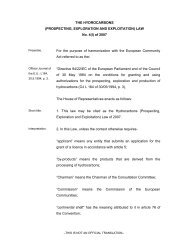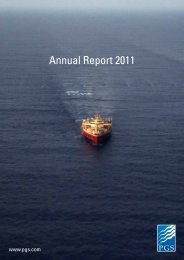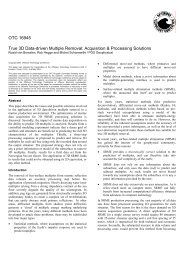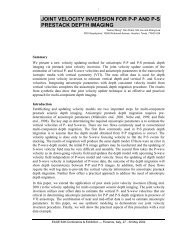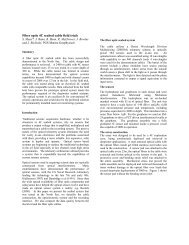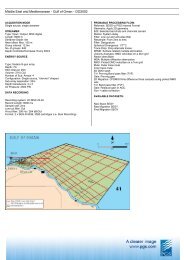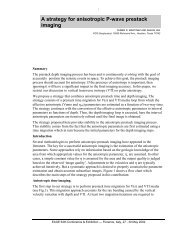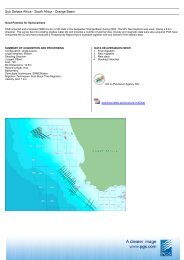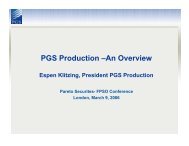Arrow Prospectus - PGS
Arrow Prospectus - PGS
Arrow Prospectus - PGS
Create successful ePaper yourself
Turn your PDF publications into a flip-book with our unique Google optimized e-Paper software.
ARROW SEISMIC ASA – INITIAL PUBLIC OFFERING<br />
• temporary differences related to investments in subsidiaries, associated companies or joint ventures,<br />
since the group determines when the temporary differences will be reversed and this is not assumed to occur in<br />
the foreseeable future.<br />
Deferred tax assets are recorded in the accounts when it is probable that the company will have sufficient taxable<br />
profit to benefit from the tax asset. On the date of each balance sheet the group will review unrecognised<br />
deferred tax assets and the book value of such assets. The companies record prior unrecognised deferred tax<br />
assets in the accounts if it becomes probable that the company can use the deferred tax asset. Moreover, the<br />
company will reduce the deferred tax asset if the company can no longer benefit from the deferred tax asset.<br />
Deferred tax liabilities and assets are measured based on the current tax rates that apply to the companies in the<br />
group where temporary differences have arisen.<br />
Deferred tax liabilities and assets are recorded in the accounts regardless of when the differences will be<br />
reversed. Deferred tax liabilities and assets are recorded at their nominal value and are classified as fixed asset<br />
investments (long-term liabilities) on the balance sheet.<br />
Tax payable and deferred tax are recorded directly against equity if the tax is related to transactions that are<br />
recorded directly against equity.<br />
Tax payable and deferred tax assets/liabilities are measured at the tax rate that applies to accrued, undistributed<br />
equity. The tax effects of dividends are taken into account when the company has incurred a liability to distribute<br />
a dividend.<br />
For Norwegian companies a tax rate of 28% is employed. For UK companies the tax rate is 30 %,<br />
8.3.17 Classification of assets and liabilities on the balance sheet<br />
Assets intended for permanent ownership or use and receivables that mature later than one year after the end of<br />
the accounting period are identified as fixed assets. Other assets are classified as current assets. Liabilities that<br />
mature later than one year after the end of the accounting period are classified as long-term liabilities. Other<br />
liabilities are classified as current liabilities. The first year’s instalments on long-term loans are classified as<br />
current liabilities in the balance sheet.<br />
8.3.18 Business areas<br />
The Group presents financial numbers for the business areas as seismic operations and offshore subsea support.<br />
Indirect attributable costs are allocated to the business areas. Financial information regarding the segments is<br />
presented in note 5.<br />
Internal profit from sale between the business areas is eliminated in the segment reporting.<br />
8.3.19 Contingent liabilities and assets<br />
Contingent liabilities are defined as:<br />
(i) Possible liabilities resulting from prior events where the existence of the liability is dependent on<br />
future events.<br />
(ii) Liabilities that have not been recognised because it is not probable that they will entail any<br />
payment.<br />
(iii) Liabilities that cannot be measured with an adequate degree of reliability.<br />
Contingent liabilities are not recorded in the annual accounts. Significant contingent liabilities are disclosed<br />
unless the probability of the liability occurring is low.<br />
A contingent asset is not recorded in the annual financial statements, but it will be disclosed if there is a certain<br />
probability that it will benefit the group.<br />
8.3.20 Events after the date of the balance sheet<br />
New information on the company’s positions on the balance sheet date has been incorporated into the annual<br />
financial statements. Events after the balance sheet date that do not affect the company’s position on the balance<br />
sheet date, but will affect the company’s position in the future, have been disclosed if they are material.<br />
62



